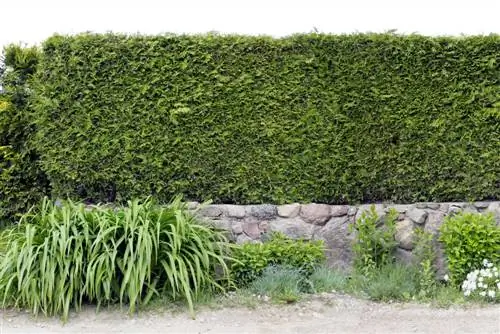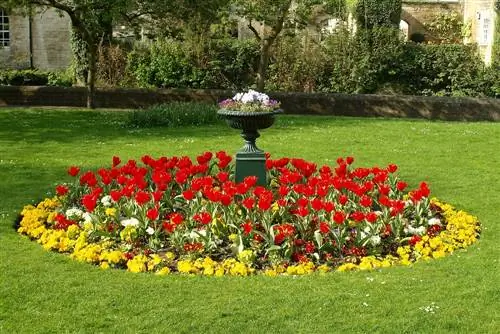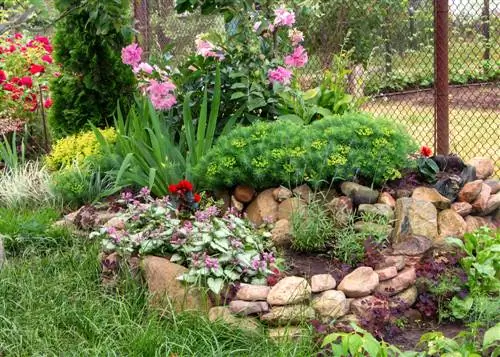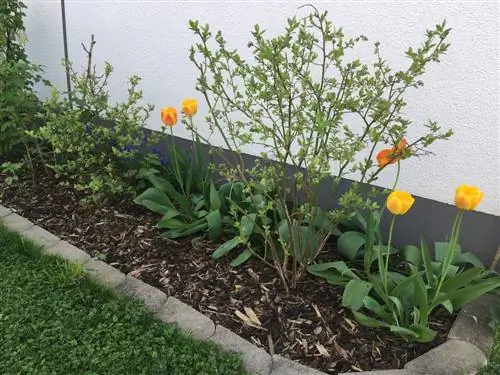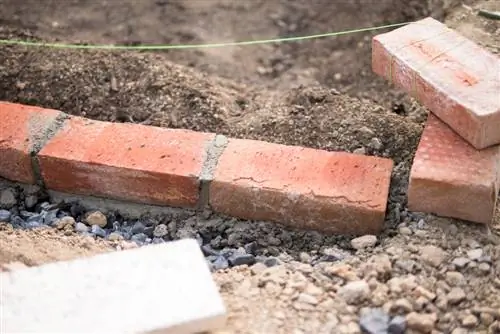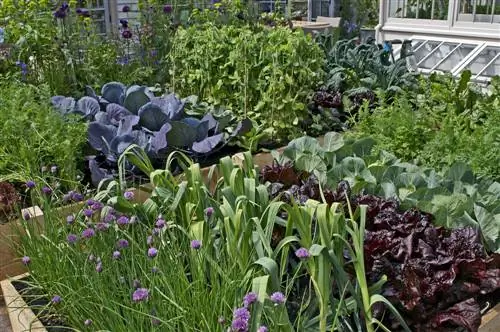- Author admin [email protected].
- Public 2023-12-16 16:46.
- Last modified 2025-06-01 06:02.
Narrow beds pose challenges for hobby gardeners because, at first glance, they offer less design freedom than large areas. With a few tricks and our design tips, these areas will become a very special highlight in your garden.

How do you plant narrow beds in front of hedges and walls?
To plant narrow beds in front of hedges or walls, you should first analyze the soil and location and then select suitable perennials. When planting, pay attention to plant spacing and improve the soil with humus or sand and apply a layer of mulch.
The right frame for colorful perennials
The dark green of a dense hedge provides a visually extremely attractive background for many plants. Bright flowers in particular come into their own wonderfully.
Walls, on the other hand, store heat and provide a microclimate in which sensitive plants thrive even in harsh locations. They are also suitable as a support for delicious espaliered fruit.
Note the position of the bed
Before you start planting, you should consider the exact conditions of the bed:
- Is it in the sun or does the hedge cast shadows for a large part of the day?
- Is the soil more moist or dry?
- Which hedge plants have you planted and will the future bed planting match them?
Which perennials are suitable?
A narrow border strip can appear very restless, mix a variety of plants colorfully together. This area is much more attractive, concentrate on two or three varieties and alternate them one after the other.
Perennials are particularly suitable for this, as they look pretty not only during the flowering period. Below are some examples?
In a shade bed, for example:
- Funkie,
- Fern,
- Disclosure sheet,
- Magnificent spar,
- Blackboard sheet.
Suitable for sunny locations:
- Lavender,
- Scented nettle,
- Sedum,
- Sage,
- Steppe candle,
- Spurge.
It can look very attractive if you choose three different types of grass that differ in leaf shape and color. The limited area is also suitable as a herb bed in a sunny location in front of a hedge.
First create a detailed planting plan in which, among other things, the planting distances are entered.
Laying out the bed correctly in front of the hedge or wall
In the first step you have to loosen the soil thoroughly. Be careful not to damage too many roots of the hedge plants or even cut the main roots.
- Then, if necessary, incorporate sand or humus to improve the soil.
- Mix in some horn meal (€6.00 on Amazon) as an organic starter fertilizer.
- Distribute all plants over the bed area according to the plan.
- Dig planting holes with a spade or a planting shovel. It is recommended to get the largest plants into the ground first.
- Press carefully and pour.
Tip
If you want to make future care of the bed easier, you should finally apply a layer of mulch. This protects the soil from drying out, so you have to water less. In addition, the rotting plant material supplies the perennials directly with nutrients.

